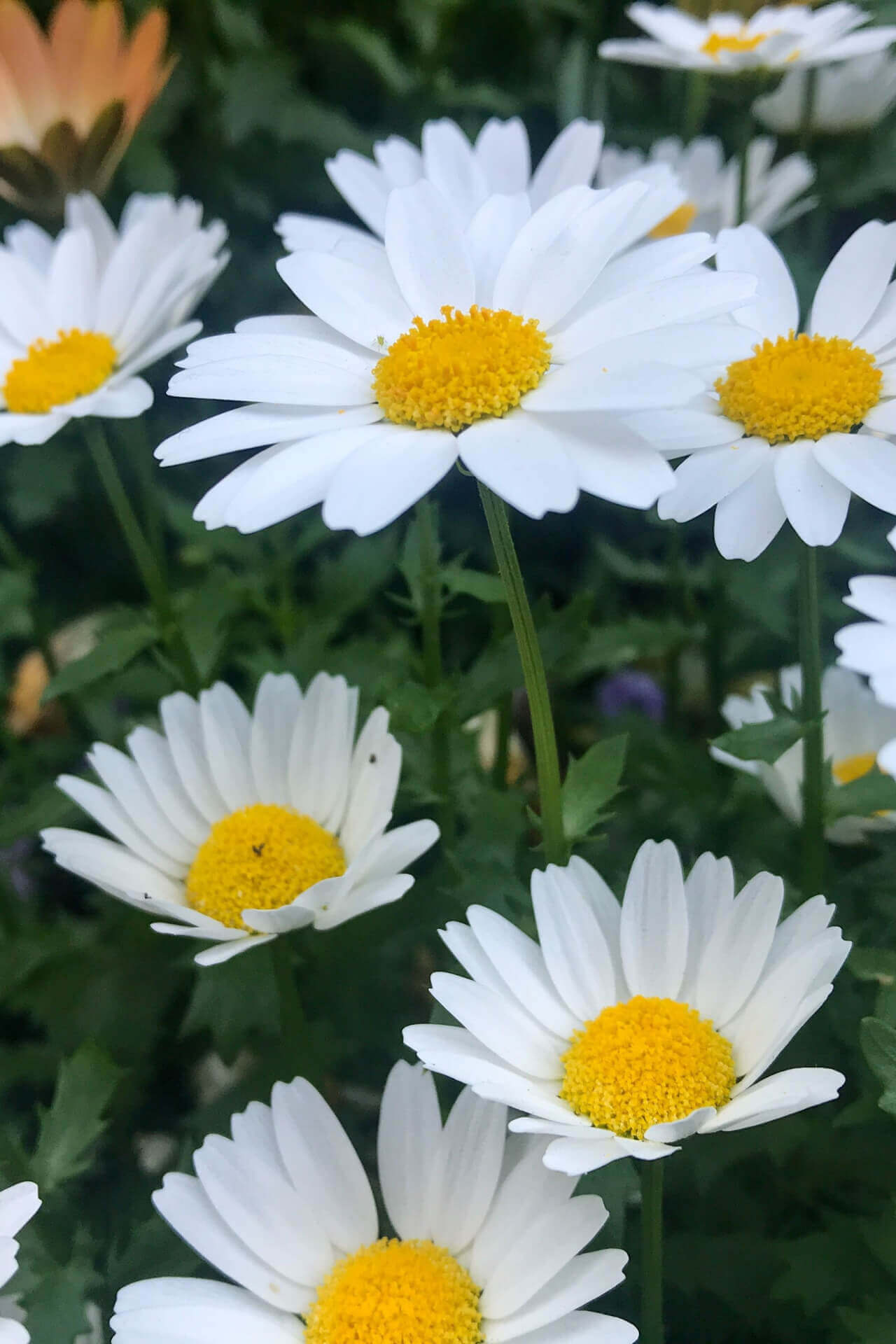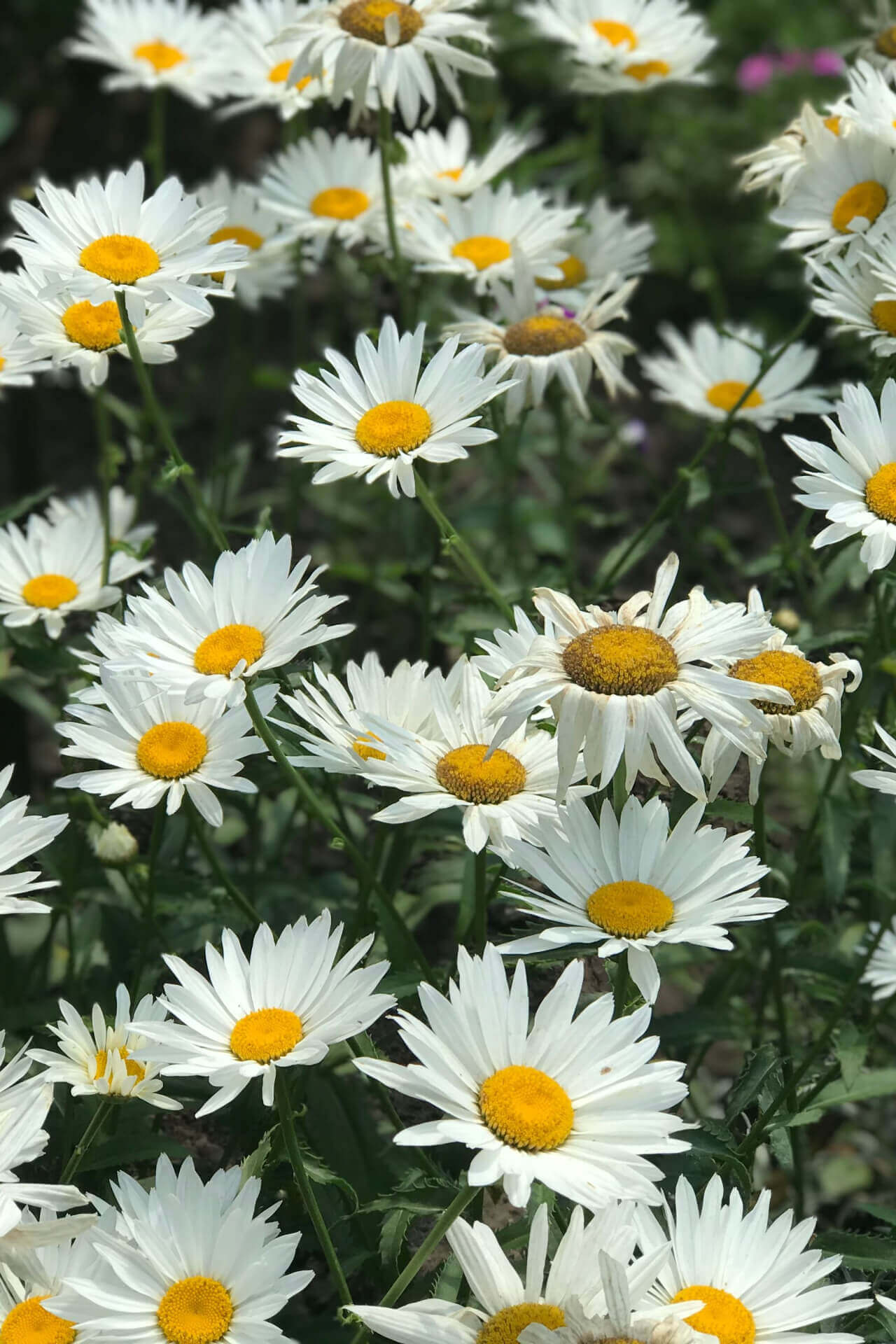Shasta Daisy
Shasta Daisy
| Order | Percentage Discount | ||
|---|---|---|---|
| 2-5 | 25% Off | ||
| 6-10 | 30% Off | ||
| 11-25 | 35% Off | ||
| 26-50 | 45% Off | ||
| 51+ | 65% Off | ||
Couldn't load pickup availability
5-7 Days
Over 12"
Full Sun
5-9
Flowering
Bare-root
Shasta Daisy
The Shasta daisy is a perennial plant known for its extensive white flowers with yellow centers. It is a popular garden staple that is easy to grow, making it a favorite among beginner and expert gardeners. This article will delve into the many aspects of the plant, including its history, cultivation, and maintenance.
Shasta Daisy's History
It was first developed in the late 19th century by horticulturist Luther Burbank. Burbank, known for his plant breeding experiments, crossbred several species to create it. The plant was named after the snow-capped peak of Mount Shasta in California, which Burbank could see from his garden.
This Easy To Grow Perennial
It is a tough plant that is easy to grow in most gardens. It thrives in full sun and prefers well-drained soil. It can grow to 36 inches tall and produces large flowers that bloom from early summer until fall. It is a perennial that can be propagated by dividing the root clumps in early spring or sowing seeds in the fall.
Maintenance
To Thrive, It Requires Minimal Maintenance
The plant should be watered regularly. Cutting the tops off spent flowers will encourage the plant to produce more blooms. In colder climates, the plant should be cut down to the ground in the fall to prevent damage from frost.
Uses
The daisy is a versatile plant that can be used differently in the garden. It is an excellent choice for borders, rock, and container gardens. It can also be used as a cut flower, making it a popular choice for floral arrangements.
They are drought-resistant perennials with abundant flowers. These hardy plants make excellent cut or dried flowers and survive in full sun and partial shade. The plant stays low to the ground, with green and divided leaves.
It bears immense flowers in spring and early summer clusters that develop into flat oval seed pods. The plants spread vigorously and can become aggressive weeds with proper care. The plant can be propagated by seed.
Seeds need light to germinate, so sowing them in an area that receives adequate sunlight is essential. Germination should occur about two weeks after the seeds are planted. You will see the green shoots popping up above the ground surface.
The young sprouts should be transplanted into larger pots with space for growth and root development, which may occur two months after transplanting them from the seedbed site. It is recommended that the young plants be transplanted one foot away from the plants during the growing season.
The plant will adapt to its new environment while being provided with fertilizer and water. The plants need regular pruning, which should be done frequently to avoid lumpy growth near the plant base. This will allow light to circulate through the plant properly, provide more nutrients, and promote an optimum growth environment.
They Can be Grown Indoors or Outdoors
If grown outdoors, ensure that it receives adequate sun and moderate water. If grown indoors, place the pot near a sunlight source.
The soil should be moist but not too wet or dry for healthy plant growth. Water must be continuously applied to the soil if the plants are grown in pots.
It would help to mist Shasta Daisy with water at least daily. Watering and fertilization should be done as often as necessary to keep the soil moist during the growing season, essential for plant maintenance.
This Is How Your Plants Will Look upon Delivery
Bloom/Foliage Color
White
Shipping date depends on the date displayed and chosen when you order from the product's page.
We only accept returns on plants verified dead. If you think your plants have died, we offer a 1 year warranty, please use use this File a Claim Link to verify dead plants and start with return warranty process.



Such a beautiful bloom when mixed with other perennial flowers. A big joy for a gardener when this fully blooms as it perfectly defines its yellow color.
Thank you for the fantastic review Oliver! We loved being of service to you and hope we can assist you again soon.
I am more than happy to say that I have ordered these for my whole family, and they loved them.
We would not be able to grow and develop without feedback like yours, Isabella. We are thrilled you had a great experience with us and hope to see you again soon.






